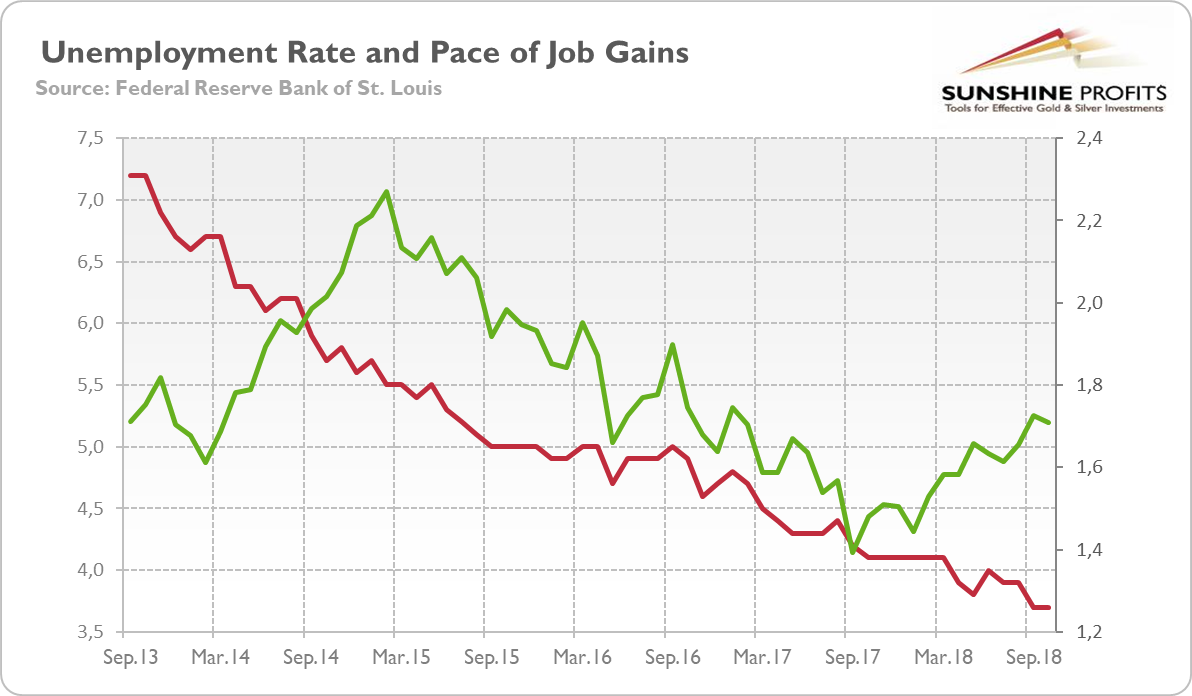Today, Americans are choosing new members of Congress. Will there be a blue wave? Or maybe red? Some people say that hot economy will help Republicans – is that true? Let’s read out today’s article about the latest US nonfarm payrolls and find out how could they affect the mid-term elections and the gold market.
Hourly Earnings Jump Above 3 Percent
U.S. nonfarm payrolls accelerated in October. The economy added 250,000 jobs last month, following a rise of 118,000 in September. The latter number was revised down, but that change was offset by the upward revision in August. Anyhow, job gains have averaged 218,000 over the past 3 months, or 211,000 over the prior twelve months. It means that the US labor market tightened further, adding more jobs than the Fed needs for a continuation of its monetary policy of gradual interest rate hikes.
The gains were above the expectations. And they were really widespread: education and health services added 47,000 jobs in October. Leisure and hospitality added 42,000, professional and business services – 35,000, manufacturing – 32,000, construction – 30,000, transportation and warehousing – 25,000. Other sectors also added jobs – actually, not a single major industry shed jobs.
Moreover, both the labor force participation rate and the employment-population ratio increased by 0.2 percentage point, to 62.9 percent and 60.6 percent, respectively. Meanwhile, the annual pace of job creations remained positive and generally in upward trend which started in the fall of 2017, as the chart below shows. And, importantly, the strong hiring kept the unemployment rate at 3.7 percent, the lowest level in 48 years.
Chart 1: U.S. unemployment rate (red line, left axis, U-3, in %) and total nonfarm payrolls percent change from year ago (green line, right axis, % change from year ago) from September 2013 to October 2018.

Last but definitely not least, the average hourly earnings for all employees on private nonfarm payrolls rose by 5 cents to $27.30. It implies that wages increased 3.1 percent over the last twelve months. It was the fastest increase in worker pay and a first jump above 3 percent since the end of the Great Recession, as the chart below shows.













Leave A Comment